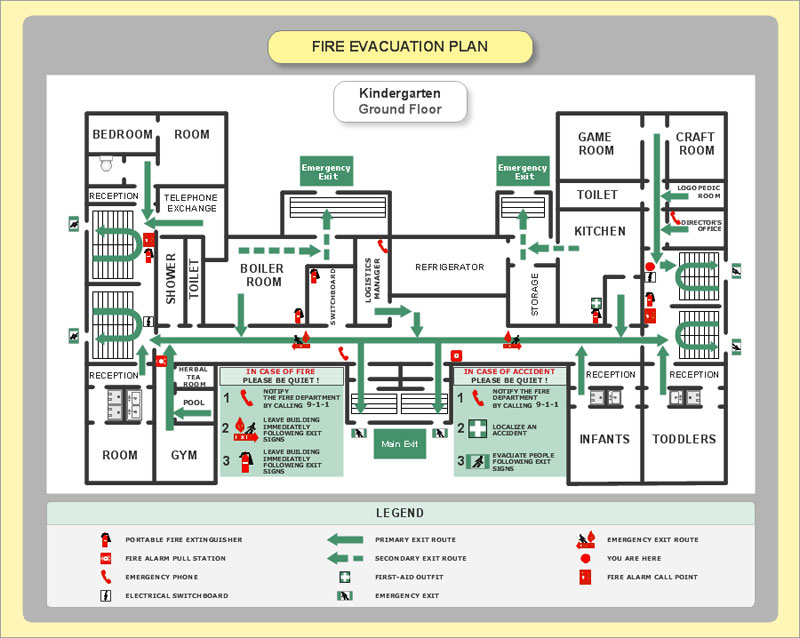Guest Editorial by Doug Haines, Haines Security
I’ve been following terrorist attacks for quite some time now and after each one look back and try to analyze what occurred and why, and if anything could have been done differently to affect the outcome.
The modern era of terrorism, generally speaking, is considered to have started with the 1972 Munich Olympic attack. Throughout the 70’s we saw a series of hi-jacking’s which eventually led to stricter security standards for the airline industry.
In the 80’s, 90’s and early 2000’s terrorist attacks took on a variety of formats. And really little has changed in the way we reacted. Sure there’s the DHS, “see something, say something” campaign but outside of that – what?
Unfortunately, in the last few years’ active shooter incidents, either inspired by Islamic-radicalization or not, have taken place. After the enormous loss of life at the Virginia Tech massacre, the notion for first responders to wait until reinforcements arrived changed.

Before, the idea was to wait until reinforcements could arrive to neutralize the threat. While still the case in some instances; i.e., San Bernardino and Orlando, police departments arm their patrols with higher powered weaponry and provide ballistic protection.
Today, some police departments are training their officers to intervene as quickly as possible, as soon a numerical superiority is achieved and not to wait on SWAT.
Another change in tactics, and widely-accepted, is the notion that a victim should use the RUN-HIDE-FIGHT approach. RUN if you can, HIDE if you can’t and FIGHT if you have to.
(RUN. HIDE. FIGHT.® Surviving an Active Shooter Event Courtesy of Ready Houston and YouTube)
Events in San Bernardino, Paris and recently in Orlando, make me wonder if teaching the RUN-HIDE-FIGHT methodology might actually be adding to the injury and death count.
I know many police departments swear by it and a lot of training has been conducted, especially at school, college and university campuses across the nation. I’m not saying it was all in vain. What I am saying is maybe we need to take a look and think “outside the box” in how we deal with terrorist acts and specifically, active shooter events.
Maybe we can and should be using building design to assist us in reducing the number of victims.
We know that designing neighborhoods and inhabited public spaces by incorporating Crime Prevention through Environmental Design (CPTED) principles developed in the early ‘90’s, are effective in reducing crime.
Why can’t the same hold true for other building design and community strategies?
Here’s my point, during a fire, the best protection for an individual in a building is to get out of the building as quickly as possible. In essence, get away from the threat – the fire.
In the security business we teach distance is the best defense. Get as far away as possible from the threat in order to protect yourself.

I’m not a firefighter and consequently have not attended any formal firefighter training, but I doubt if anywhere in their training, it says to tell people to stay in the building until the firetruck shows up to save them.
We don’t do that for fire but we do that for active shooter incidents. Huh?
A Different Design Is Needed
We’ve come up with legislation that implements fire safety codes, which include labeling exits, training personnel in escape procedures, signage and so on. There hasn’t been a fire related death in a school since 1957.
That tells me all the codes, training and practice fire drills have paid off.
Couldn’t and shouldn’t the same hold true for active shooter situations or other types of terrorist attacks, for example, vehicle or backpack bombings? We could easily design buildings and rooms within so that there are always at least two evacuation routes.
This would allow people to escape the shooter, instead of hiding in the bathroom and waiting to be murdered or, at best, to fight to overwhelm the attacker. Essentially, we’ve told and trained folks to be sitting ducks.
That I know of, no one involved during the initial phase of an active shooter incident has been shot in the back while trying to escape. I may be wrong here but I’ve not heard of anyone. But I have heard of people being killed while they waited for the police to neutralize the threat.
I believe the notion that people should hunker-down until the cavalry arrives is ludicrous.
Instead we should be teaching people to RUN-RUN-RUN. But in order to do that, we have to design buildings so that people can RUN no matter what. Which means every internal space should have at least, two exits. Preferably opposite each other to afford people the opportunity to get away.
In the RUN-HIDE-FIGHT approach we address what the victim should do. Police departments have addressed what they should do but we haven’t address what the “environment” should do.
Legislators have addressed how the environment should react to certain threats, like fire and earthquakes but not for active shooters or other forms of terrorism.
Creativity versus Safety and Security
A few months ago, I was meeting with a very dear friend and she told me that as the Chief Security Officer for a very large multi-national company, the thing that kept her up at night was the fact that since interior designers have been creating office spaces that promote the free flow of ideas and creativity, there were no more walls to hide behind and because of that the company’s employees were basically “sitting ducks” during an active shooter event.

I guess there’s a trade-off between inventiveness and protection. I don’t think there has to be. I think we can do both.
As just one example, I believe we can compartmentalize transit spaces, such as hallways, stairwells, much in the same way as ships have bulkheads that compartmentalize the interiors of the ship in case of fire or flooding. We could do the same with these transit spaces and make it so that once a “bad guy” is in this space we can seal him or her off so that there is no freedom of movement.
By restricting the freedom of movement haven’t we in essence prevented the threat from causing more victims? Obviously, some technical expertise is needed and every building or inhabited space would need to be analyzed on its own merit and would probably require a different and specific solution, but the same basic principle would exist throughout.
We would also need to provide additional protection to the interior walls so that the perpetrator couldn’t “mouse-hole” his way out of the space. In other words, limit the ability to shoot thru the drywall and go into another room. We would need to figure out what’s the best way to do that in any given situation.
There are ballistic resistant wall materials already on the market, which we could and should use to isolate the “rat”.

Antiterrorism Strategies
Admittedly, there is probably a higher likelihood of being involved in a fire or natural disaster than there is a terrorist act. And again, admittedly, a higher likelihood of being involved in an active shooter incident than there is a vehicle bombing event or other form of terrorist act; i.e., kidnapping, arson, etc.
However, just because it’s not a frequent event it doesn’t mean we can’t plan for it so that when it does come the effects are not as catastrophic as they would otherwise have been.
With the event in Paris last November we saw that hundreds of casualties can result from an active shooter event, especially if there are multiple murderers. On the other hand, a single vehicle borne improvised explosive device or backpack bomb could cause just as many casualties if not more.
Some security and engineering experts within the DOD recognize that when it comes to terrorist acts, vehicle bombings cause the highest number of casualties, per perpetrator victim ratio; therefore, they’ve developed a set of standards that limit the introduction of bombs into or near inhabited spaces.
(Hear from the Author directly, and how Haines Security is expanding to offer their Security Engineering & Building Design Expertise across the globe. Courtesy of BWBusinessworld and YouTube)
To tear down all buildings and start from scratch would be too cost-prohibitive, so why don’t we set guidelines that all new construction after a certain date meet a new standard for construction and building design that incorporates features within the design to reduce the effects of terrorist activity.
All existing buildings could be brought into compliance over time when certain parameters are met; i.e., change in usage, increase in floor space or during major renovation projects.
With the focus on developing Smart Cities we’ve been implementing ordinances that require buildings and neighborhoods to meet CPTED principles. Couldn’t the same hold true for anti-terrorism (AT) strategies?
5 Key Antiterrorism Categories
That said, I think we could reduce these antiterrorism (AT) principles into five general categories;
- Maximize stand-off distances
- Reduce flying debris hazard
- Prevent progressive collapse
- Limit airborne contamination, and
- Provide mass notification
I admit there would be additional costs involved in implementing these concepts, but those costs can be greatly reduced if they were incorporated during the design phase, instead of being added at the end of a project, as currently is the normal process for including security features in a project.
I’m not advocating that all buildings should be built to a new higher standard, a standard that reduces the effects of terrorist attack and in particular, active shooter incidents and vehicle borne improvised explosive devices, but I do think that buildings that have high population densities, i.e., government offices, nightclubs, public buildings, shopping malls, theaters, etc., above a certain population density threshold should.
Unfortunately, there have been far too many terrorist attacks around-the-world – shouldn’t we have learned something from them?
(Learn About Haines Security, courtesy of Security Engineering and YouTube)
About the Author
Doug Haines, owner of Haines Security Solutions, LLC (HSS), is a United States Air Force veteran with over 45 years of law enforcement and security related experience, which includes teaching building design principles to architects, engineers, facility managers, planners, and security professionals.

HSS specializes in conducting quantitative risk and vulnerability assessments of federal, state and local facilities worldwide and other security related consulting services.
HSS also develops security criteria, conducts entry control point and security forces manpower studies, drinking water systems and critical energy infrastructure risk/vulnerability assessments, and develops, plans and conducts table-top and full scale antiterrorism, force-on-force, emergency response and disaster preparedness exercises.
This article is featured in the 2016 AST CHAMPIONS EDITION at https://joom.ag/tdQW.
















